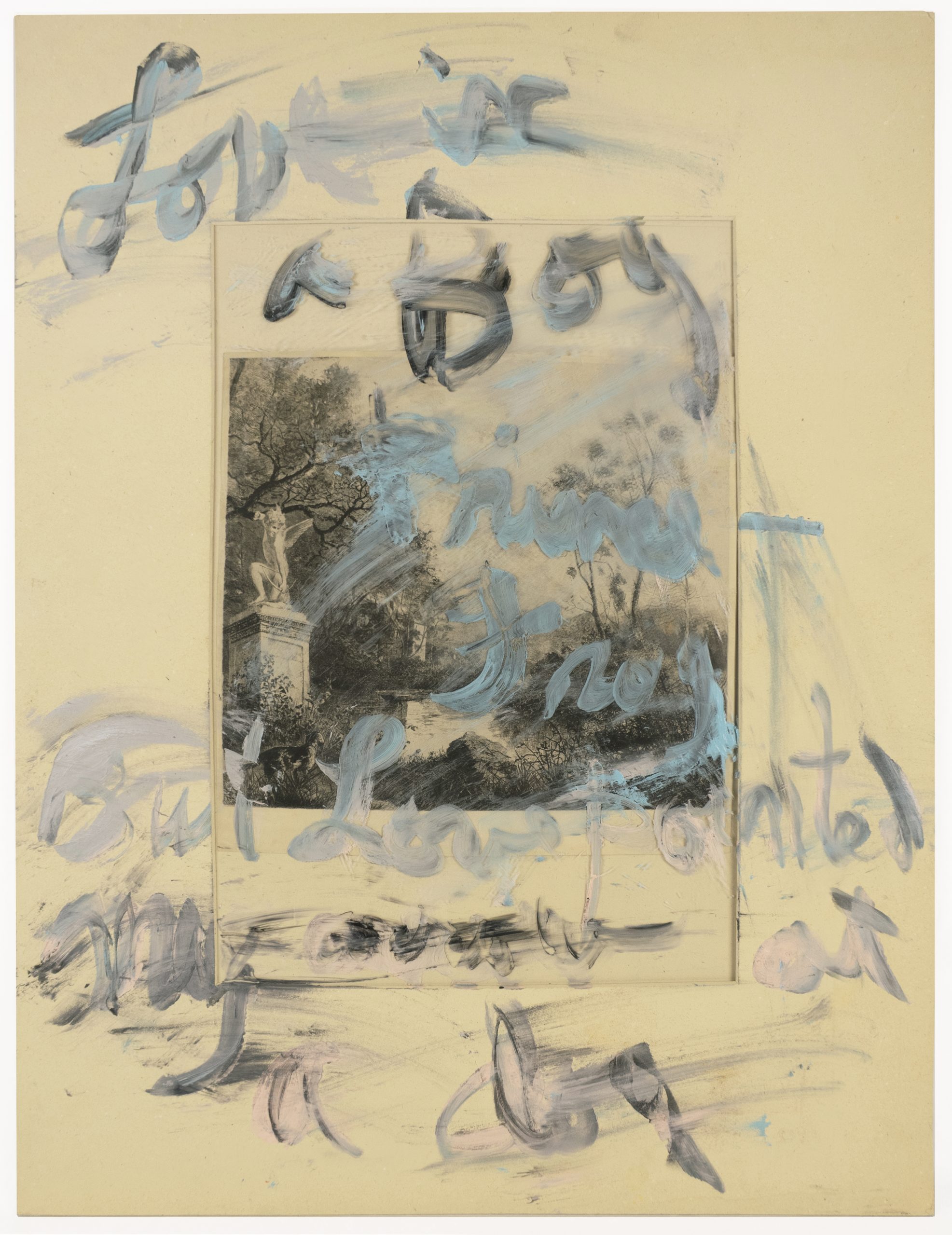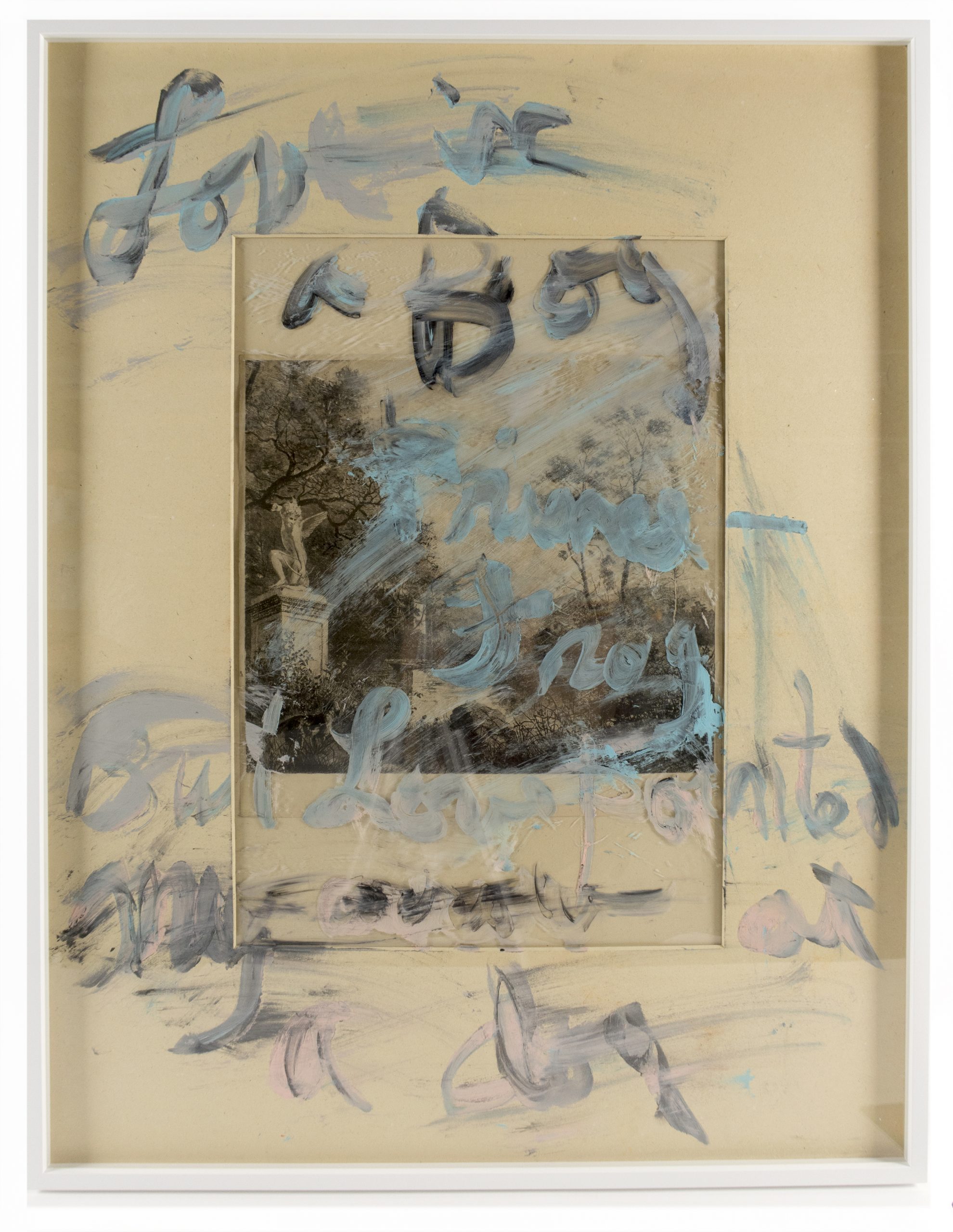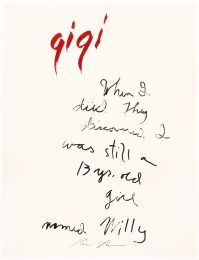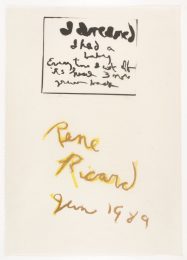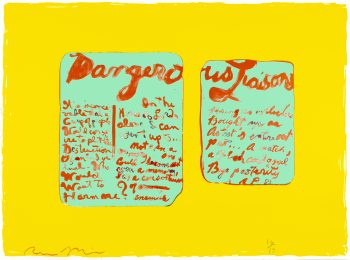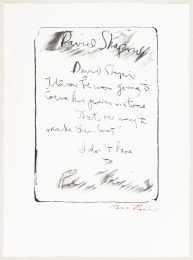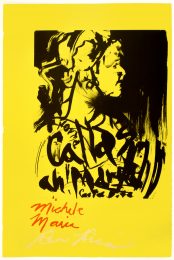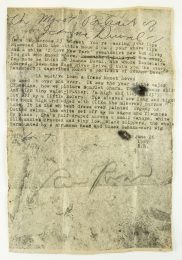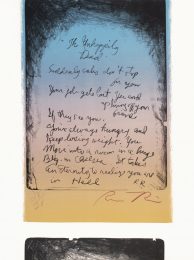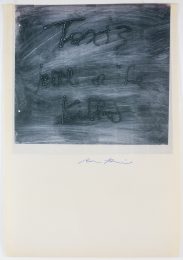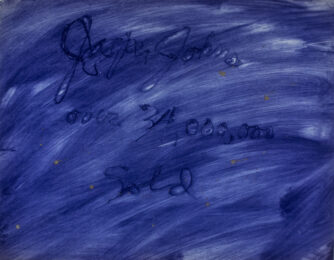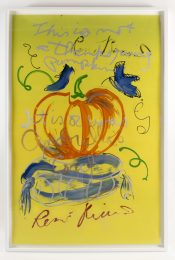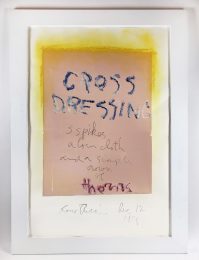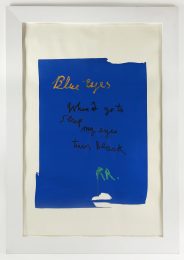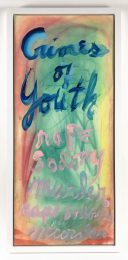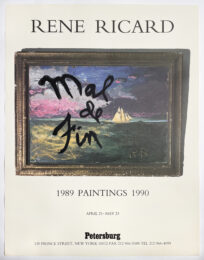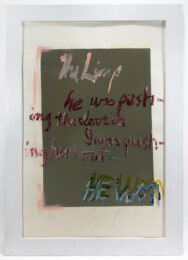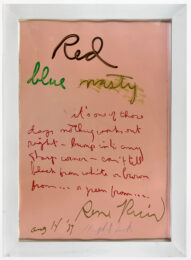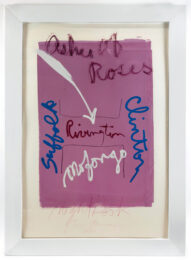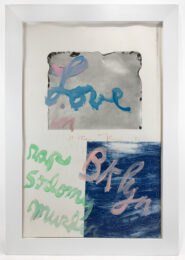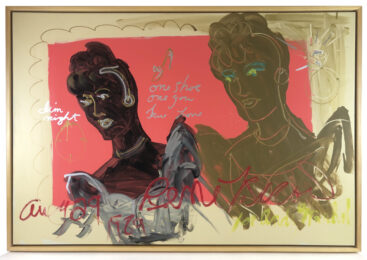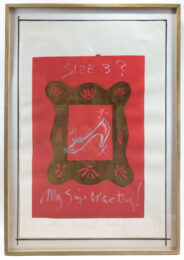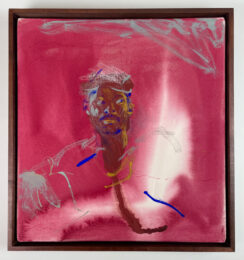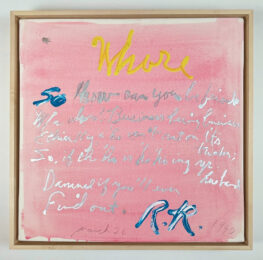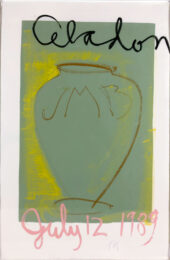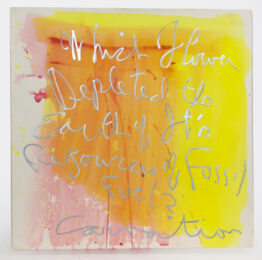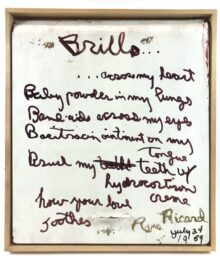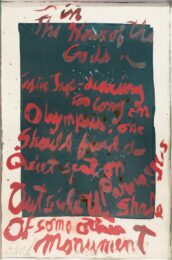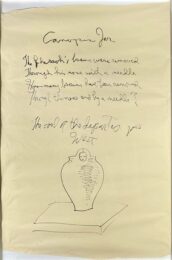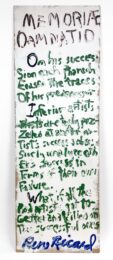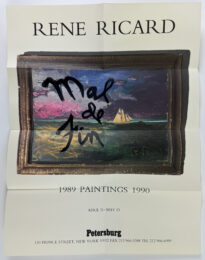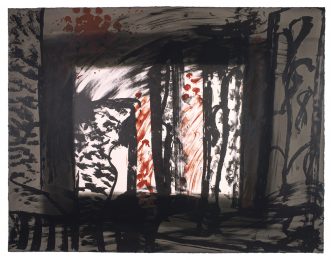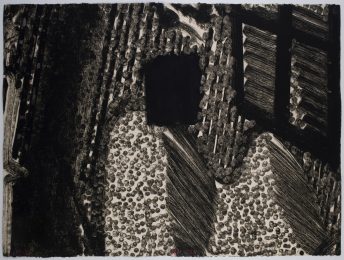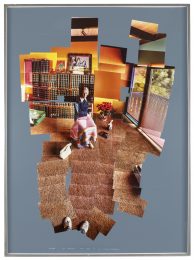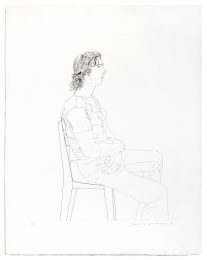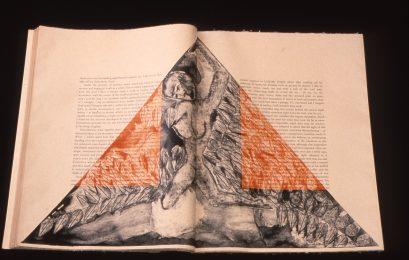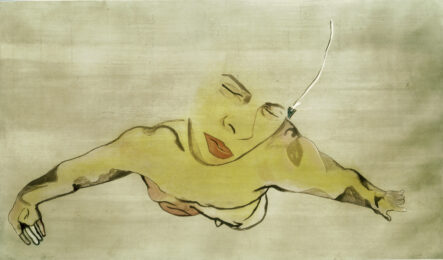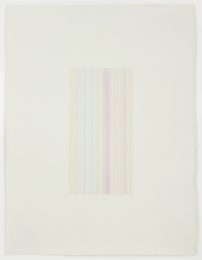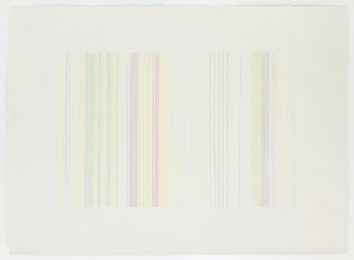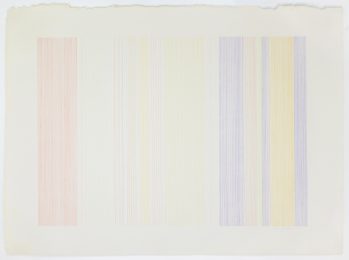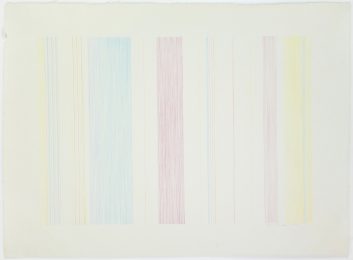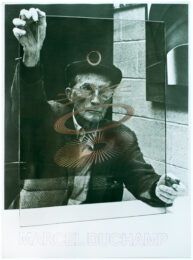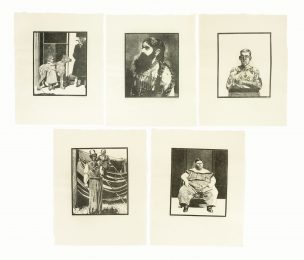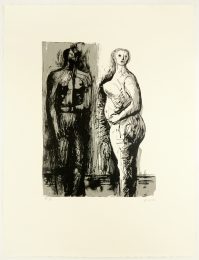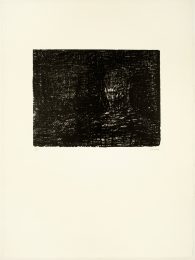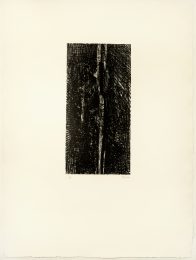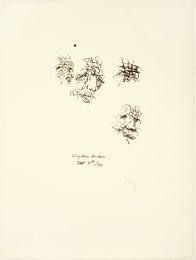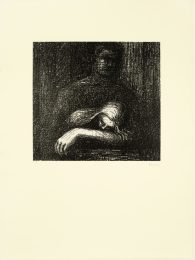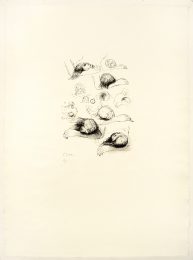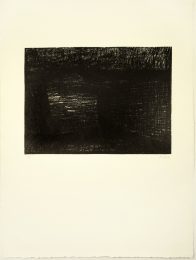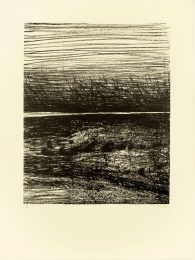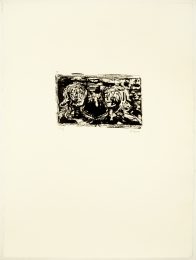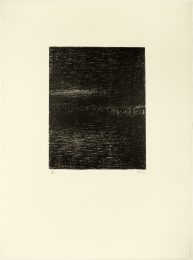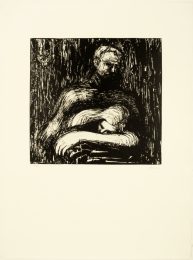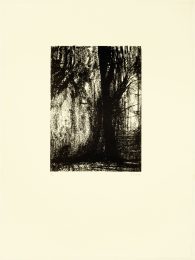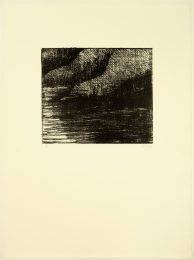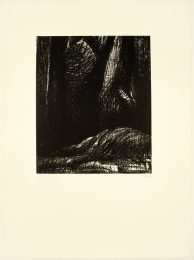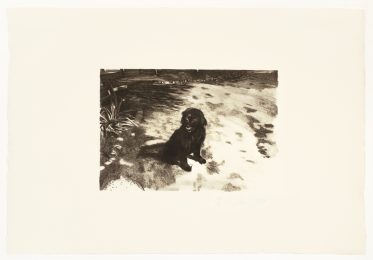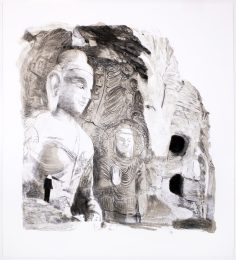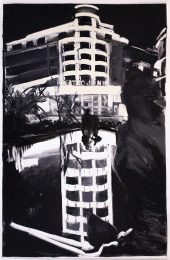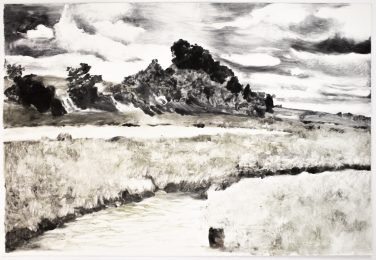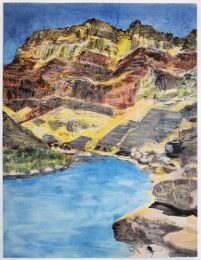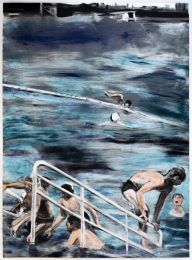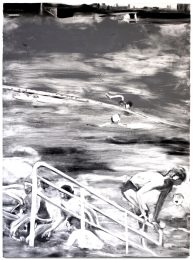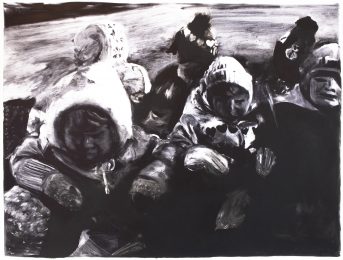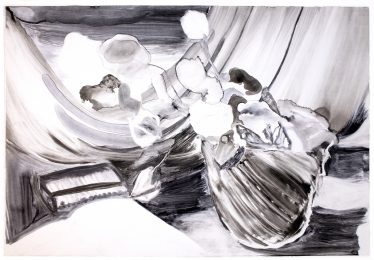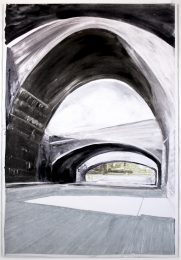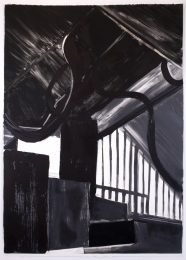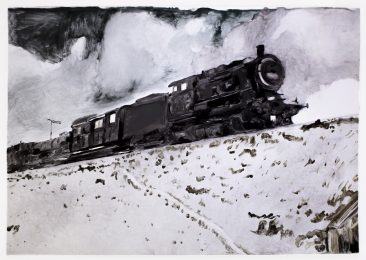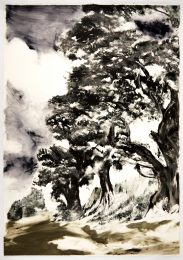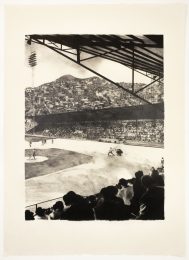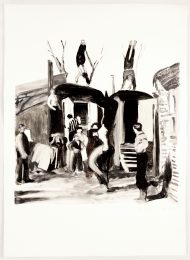Details — Click to read
Painted in baby blue and grey, this oil painting on natural colored matting features handwritten poetry and collaged elements. The antique print depicts a romantic, pastoral scene, with a statue of cupid drawing his bow by a placid pond. A dog glances up at the sculpture, amid tangled brush. In light blue and grey, Ricard scrawls with unabashed confidence: “Love is a boy / Prince – Frog / But love pointed my arrow at a dog.” Referring to the age-old fairy tale of a frog that turns into a prince upon receiving a kiss, Ricard inverts the fable into one of mundane disappointment. The romantic, idyllic scene pictured in the antique print contrasts sharply with Ricard’s morose musings, smudged as if in anger or by tears.
Ricard may have been inspired by a 17th century epigram “On Cupid: Love is a Boy, and subject to the rod / Some say, but Lovers say he is a God / I think that love is neither god nor boy/ But a mad brains imaginary”
White finished poplar frame 37.5 x 29.75 in. / 95 x 75.5 cm
with 1/2 in. moulding.
Paper 33.5 x 25.75 in. / 85 x 65.5 cm
Ricard was a poet and art critic who published numerous books of poetry, and his increasing use of text in his work over the 1980’s reflects this interest in the written word. Ricard’s confessional poetry is often handwritten over spontaneous drawings. Ricard’s confidence (and his bedroom-eyed allure) attracted the attention of Andy Warhol, and the young Rene (formerly Albert Napoleon Ricard) became his protege. He would appear in three Warhol films, even playing the Factory founder himself in “Andy Warhol Story”. Warhol would later call the famously acid-tongued Ricard “The George Sanders of the Lower East Side, the Rex Reed of the art world.”
By the early 1980s, Rene Ricard was a fixture in the New York art scene, not only as an accomplished artist, but as a critic. Penning enlightening and poetic essays for Artforum, he turned his attention to rising stars such as Julian Schnabel and Alex Katz. Ricard famously wrote the first major article on Jean-Michel Basquiat. “The Radiant Child” is credited with launching Basquiat’s career, and is considered a seminal contemporary art essay.
Provenance: The artist, 1989.

